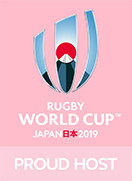
Mibu Kyogen

Nenbutsu kyogen (prayer to the Buddha in the form of comic drama) was originated by the monk Engaku at Mibudera Temple approximately 700 years ago.Through the actors wear masks, as in conventional kyogen theater, they say no lines and remain silent.
Musical accompaniment is provided by a gong, struck slowly and rhythmically, a drum, and a flute.
The actors' performance consists entirely of movements of the body and hand gestures.
There are some 30 plays in all, and the performance always begins with Horaku Wari (Smashing Plates) to ward off evil.In addition to Oketori (By the Bucket) and Atago mairi (The Pilgrimage to Mt.Atago), which are unique to Mibudera, there are also a number of plays common to the Noh repertoire, such as Hashi Benkel (Benkel on Gojo Bridge), Oeyama (Mt.Oe), and Tsuchigumo (The Demon Spider).
Nenbutsu kyogen is an unusual example of Japanese sacred theater and has aroused great interest both in Japan and overseas.
Performances have been staged in places such as in Hawaii and Hong Kong.
Musical accompaniment is provided by a gong, struck slowly and rhythmically, a drum, and a flute.
The actors' performance consists entirely of movements of the body and hand gestures.
There are some 30 plays in all, and the performance always begins with Horaku Wari (Smashing Plates) to ward off evil.In addition to Oketori (By the Bucket) and Atago mairi (The Pilgrimage to Mt.Atago), which are unique to Mibudera, there are also a number of plays common to the Noh repertoire, such as Hashi Benkel (Benkel on Gojo Bridge), Oeyama (Mt.Oe), and Tsuchigumo (The Demon Spider).
Nenbutsu kyogen is an unusual example of Japanese sacred theater and has aroused great interest both in Japan and overseas.
Performances have been staged in places such as in Hawaii and Hong Kong.
TM © Rugby World Cup Limited 2015. All rights reserved.